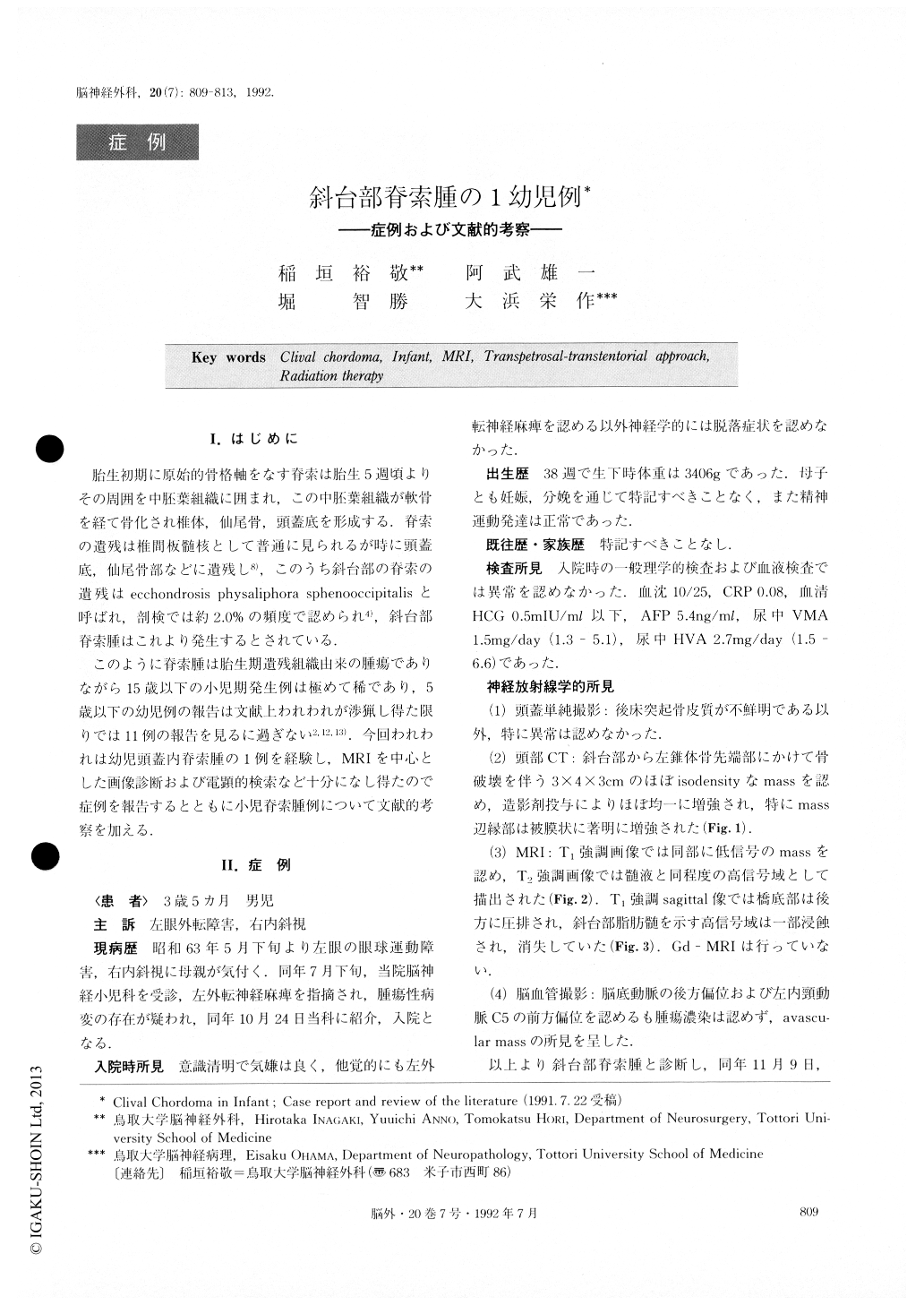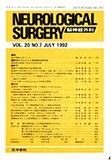Japanese
English
- 有料閲覧
- Abstract 文献概要
- 1ページ目 Look Inside
I.はじめに
胎生初期に原始的骨格軸をなす脊索は胎生5週頃よりその周囲を中胚葉組織に囲まれ,この中胚葉組織が軟骨を経て骨化され椎体,仙尾骨,頭蓋底を形成する.脊索の遺残は椎問板髄核として普通に見られるが時に頭蓋底,仙尾骨部などに遺残し8),このうち斜台部の脊索の遺残はecchondrosis physaliphora sphenoocciloitalisと呼ばれ,剖検では約2.0%の頻度で認められ4),斜台部脊索腫はこれより発生するとされている.
このように脊索腫は胎生期遺残紺織由来の腫瘍でありながら15歳以下の小児期発生例は極めて稀であり,5歳以下の幼児例の報告は文献上われわれが渉猟し得た限りでは11例の報告を見るに過ぎない2,12,13).今回われわれは幼児頭蓋内脊索腫の1例を経験し,MRIを中心とした画像診断および電顕的検索など十分になし得たので症例を報告するとともに小児脊索腫例について文献的考察を加える.
Skull base chordoma in infants is a very rare entity in spite of its congenital origin ; only 11 clinical cases can be found in the literature so far. Here we report such a case and review the literature.
The case is that of a 3.5-year old boy suffering from left abducent nerve palsy for 5 months. CT scan re-vealed an isodense mass lesion with bone destruction involving the clivus and left petrous apex, and was homogeneously enhanced on post-contrast study. MRI disclosed the clival tumor as a long T1 and long T2 mass. Angiogram showed no tumor stain. The tumor was preoperatively diagnosed as clival chordoma, and was partially removed via left transpetrosal-transtentorial approach. The tumor was found to ex-tend into the subdural space through Dorrello's canal and compress the abducent nerve. Histological ex-amination with H & E, PAS, mucicarmine, and reticulin stainings led us to a diagnosis of “typical chordoma”. Electron microscopy demonstrated the mitochondria-endoplasmic reticulum complexes (MERC) , glycogen granules, and vacuoles in the tumor cells. Postoperative irradiation (total dose 55 Gy) was performed. At pre-sent, 30 months after the operation, no evidence of tumor regrowth nor hypothalamus-pituitary deficiency is recognizable and the patient is free from left abdu-cent nerve palsy.
It is concluded that skull base chordoma in infants should be postoperatively irradiated in an appropriate manner.

Copyright © 1992, Igaku-Shoin Ltd. All rights reserved.


